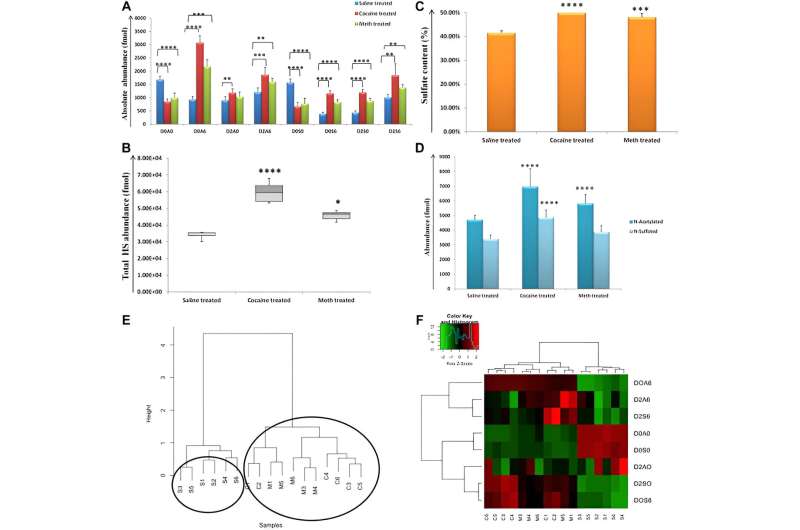This article has been reviewed according to Science X's editorial process and policies. Editors have highlighted the following attributes while ensuring the content's credibility:
fact-checked
peer-reviewed publication
trusted source
proofread
New study defines relationships among heparan and chondroitin sulfate and associated proteins involved in drug abuse

Substance use disorder is a major concern with few therapeutic options. In 2019, close to 20.4 million people were diagnosed with substance use disorder, and nearly 71,000 people died of an overdose, with cocaine and methamphetamine (meth) responsible for approximately 15,000 deaths that year.
A new study from researchers at Boston University Chobanian & Avedisian School of Medicine and the Scripps Research Institute reveals how altered molecules and related neurobiological mechanisms operate during substance abuse. These findings open avenues for developing new therapeutic targets and treatment strategies to improve quality of life for drug addicts.
"The altered pathways and associated molecular mechanisms we found will strengthen our fundamental knowledge of the neurobiology of addiction. The expression patterns we reported and their functional roles need to be further characterized to unravel the biological implications of drug abuse in the brain," explained co-corresponding author Joseph Zaia, Ph.D., professor of biochemistry & cell biology at the school.
The researchers performed mass spectrometry-based glycomic and proteomic analysis to understand the effects of cocaine and meth on two brain regions critically involved in drug addiction: the lateral hypothalamus and the striatum. They observed that cocaine and meth significantly altered glycan and sulfate contents and compositions for heparan sulfate and chondroitin sulfate disaccharides known to be involved in neuronal processes, and thus, likely contribute to drug-induced neural plasticity in these brain regions.
"Notably, altering the levels of these sulfated glycans in the experimental models ameliorated anxiety and prevented the expression of preference for cocaine during cocaine withdrawal. Taken together, this data supports the role of sulfated glycans and associated proteins in stimulants abuse and suggests that their manipulation can represent a novel therapeutic strategy," adds first author Manveen K Sethi, Ph.D., research assistant professor of biochemistry & cell biology at the school.
These findings appear online in the journal Molecular Cellular Proteomics.
More information: Manveen K. Sethi et al, Comprehensive Glycomic and Proteomic Analysis of Mouse Striatum and Lateral Hypothalamus Following Repeated Exposures to Cocaine or Methamphetamine, Molecular & Cellular Proteomics (2024). DOI: 10.1016/j.mcpro.2024.100803



















